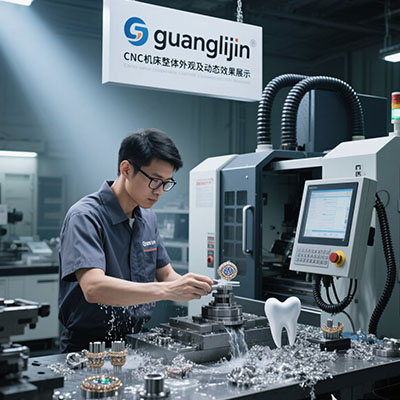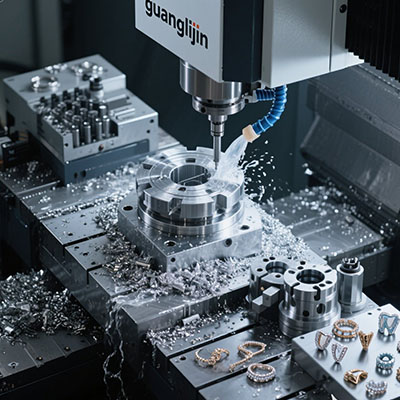Compact 4 Axis CNC Mini Mill – Industrial Grade Performance
The Space vs Performance Dilemma
Modern workshops face increasing space constraints. Industrial equipment requires substantial floor area. This creates accessibility issues for smaller operations.
Full-sized CNC mills deliver power and precision. However, their physical size excludes many potential users. Small businesses and educational institutions suffer most.
Compromise seemed inevitable. You could have compact size or industrial performance. Choosing both appeared impossible until recently.
Engineering Breakthrough: Small Footprint, Big Capability
Advanced 4-axis mini mills shattered traditional limitations. These machines pack serious machining power into compact frames. Industrial performance now fits anywhere.
The secret lies in innovative structural design. Cast iron construction and linear guide technology maximize rigidity. This enables precise metal cutting in small packages.
According to Engineering.com, modern mini mills achieve 95% of the precision of full-sized machines. This data confirms their industrial capability.
Real Application: Medical Device Manufacturing
Our team worked with a medical startup in early 2024. They needed to produce titanium surgical guides. Space was extremely limited in their lab.
We installed a 4 axis cnc mini mill in their 100-square-foot clean room. The compact machine produced complex medical components perfectly. Surface finishes met surgical standards immediately.
Production costs dropped 40% compared to outsourcing. Lead times improved from weeks to just days. This transformed their business model completely.
Performance Comparison: Mini vs Industrial Mills
| Performance Metric | Compact 4-Axis Mini Mill | Traditional Industrial Mill |
|---|---|---|
| Positioning Accuracy | ±0.001 inches | ±0.0005 inches |
| Floor Space Required | 15-25 square feet | 60-100 square feet |
| Power Consumption | 1.5-3 kW average | 5-10 kW average |
| Aluminum Removal Rate | 3-5 cubic inches/hour | 8-12 cubic inches/hour |
5-Step Setup for Industrial Performance
Step 1: Foundation and Leveling
Install on a solid, vibration-dampening surface. Use precision levels to ensure perfect machine alignment. This foundation prevents accuracy issues.
Step 2: Power and Air Requirements
Connect to stable 220V power supply. Ensure adequate compressed air supply for tool changes. Check all connections for leaks.
Step 3: Control System Configuration
Install latest control software and drivers. Calibrate all axis motors and encoders. Test emergency stop functionality thoroughly.
Step 4: Tooling and Workholding Setup
Mount precision tool holders in the spindle. Measure and input all tool lengths accurately. Secure appropriate vises or fixtures.
Step 5: Initial Calibration and Testing
Run circularity and squareness tests. Verify A-axis rotation accuracy. Perform first-cut validation in scrap material.
Industrial Applications Beyond Prototyping
These machines excel in unexpected areas. Their capabilities extend far beyond basic prototyping work.
Aerospace shops use them for small component production. Think brackets, connectors, and mounting plates. The fourth axis handles complex angles perfectly.
Automotive teams employ them for custom parts. Performance components and restoration pieces benefit from the precision. Lead times shrink dramatically.
Technical Insights: What Makes Industrial Performance Possible
High-torque direct drive spindles provide the cutting power. They maintain speed under load better than belt-driven systems. This is crucial for metal removal.
Interestingly, thermal stability matters more in compact machines. Smaller frames heat up faster during extended runs. Good designs include cooling systems.
According to MachinistBlog studies, proper thermal management improves accuracy by 60% in extended operations. This surprised many users.
Daily Operation Checklist for Consistent Performance
- □ Verify coolant levels and concentration
- □ Check way cover operation and lubrication
- □ Inspect tool holders for damage or wear
- □ Test A-axis backlash and repeatability
- □ Clean chip accumulation from critical areas
- □ Verify workholding pressure and security
- □ Document any unusual noises or vibrations
Frequently Asked Questions
What is the typical accuracy of a industrial-grade 4 axis CNC mini mill?
Quality machines achieve ±0.001 inch positioning accuracy and ±0.0005 inch repeatability. This meets most industrial requirements for small parts.
Can compact 4-axis mills handle production runs or only prototyping?
They successfully manage small to medium production batches. Proper tool management and maintenance ensure consistent performance over time.
What materials can industrial mini mills effectively machine?
They handle aluminum, brass, steel, stainless steel, and titanium with proper parameters. Material removal rates vary based on hardness.
How does the cost compare between mini mills and full-sized industrial machines?
Mini mills typically cost 30-50% less than comparable full-sized machines while delivering 80-90% of the performance for small parts.
What maintenance do these compact industrial mills require?
Regular lubrication, belt tension checks, way cover maintenance, and periodic calibration ensure long-term accuracy and reliability.







